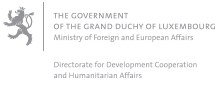- Home
- Preface
- Development Effectiveness
- World Humanitarian Summit
- I. Luxembourg’s official development assistance in 2016
- II. Cooperation with the main partner countries
- III. Regional cooperation and cooperation with other countries
- IV. Multilateral cooperation
- V. European Union
- VI. Cooperation with non-governmental development organisations
- VII. Humanitarian action
- VIII. Programme support
- IX. Development education and awareness raising
- X. Inclusive finance and the private sector
- XI. Evaluation
- XII. Report on the progress of the work of the Interministerial Committee for Development Cooperation in 2016
- Appendices
VII. Humanitarian action

Emergency aid
About 75% of the annual huanitarian budget is allocated to emergency humanitarian aid.
The aid was allocated with a particular focus on the most vulnerable people, in particular in taking into account several indicators such as the classification of humanitarian crises, the index for risk management (INFORM) and the forgotten crises indicators produced by the services of ECHO and OCHA.
At the global level, armed conflicts and attacks on civilians have increased alarmingly. Natural disasters, exacerbated by climate change and demographic change, continue to occur with increased frequency and intensity. With over 60 million forcibly displaced people in the world, prolonged displacement has become a major humanitarian challenge.
2016 was marked by several humanitarian crises categorised as level 3, the highest level on the United Nations scale: Iraq, Syria, South Sudan and Yemen.
With regard to the Syrian crisis, the Luxembourg government was able to honour its pledge and contributed 7,5 million euros (of which 5 million euros came from the humanitarian budget). The other main beneficiary countries of Luxembourg’s humanitarian assistance were South Sudan, the CAR, Iraq, Mali, the DRC, Afghanistan, Yemen, Haiti and Nepal. West Africa, the Horn of Africa and the Great Lakes region also received Luxembourg assistance through a multi-country approach. Other beneficiaries were the Philippines, the Occupied Palestinian Territories, Pakistan, Myanmar, Thailand, Somalia, Kenya, Bangladesh, Burundi and Burkina Faso.

